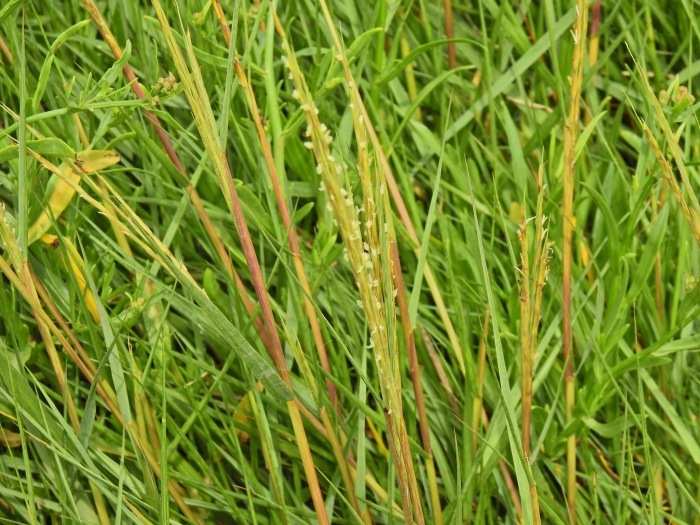Common Cordgrass
(Sporobolus anglicus)
Common Cordgrass (Sporobolus anglicus)
/
/

Susan Marley
CC BY 4.0
Image By:
Susan Marley
Recorded By:
Copyright:
CC BY 4.0
Copyright Notice:
Photo by: Susan Marley | License Type: CC BY 4.0 | License URL: http://creativecommons.org/licenses/by/4.0/ | Rights Holder: Susan Marley | Publisher: iNaturalist | Date Created: 2020-07-29T14:49:02-07:00 |
























Estimated Native Range
Summary
Sporobolus anglicus, commonly known as common cordgrass, is a perennial grass native to Great Britain. It is an allotetraploid species derived from Sporobolus maritimus and Sporobolus alterniflorus. This grass typically grows 1 to 4 feet tall with stiff, erect, yellowish-green leaves. It produces flowers from late summer to autumn, with the inflorescence being a one-sided spikelet that adds a delicate texture to the landscape.
Common cordgrass is valued for its ability to stabilize soil and reduce erosion in coastal environments. It is often used in restoration projects for salt marshes and can also be planted in bioswales and retention basins to filter pollutants. In cultivation, it requires full sun exposure and thrives in saline soils with poor drainage. While it is a low-maintenance plant, it is important to be aware of its invasive potential outside its native range. It can spread rapidly and outcompete native vegetation, which is why it is considered invasive in some regions.CC BY-SA 4.0
Common cordgrass is valued for its ability to stabilize soil and reduce erosion in coastal environments. It is often used in restoration projects for salt marshes and can also be planted in bioswales and retention basins to filter pollutants. In cultivation, it requires full sun exposure and thrives in saline soils with poor drainage. While it is a low-maintenance plant, it is important to be aware of its invasive potential outside its native range. It can spread rapidly and outcompete native vegetation, which is why it is considered invasive in some regions.CC BY-SA 4.0
Plant Description
- Plant Type: Grass
- Height: 1.5-3 feet
- Width: 1-2 feet
- Growth Rate: Moderate
- Flower Color: N/A
- Flowering Season: Summer, Fall
- Leaf Retention: Semi-deciduous
Growth Requirements
- Sun: Full Sun
- Water: High, Aquatic
- Drainage: Standing
Common Uses
Erosion Control, Salt Tolerant, Water Garden
Natural Habitat
Coastal salt marshes and intertidal zones of the Atlantic and Gulf Coasts of North America
Other Names
Common Names: Saltmarsh Cordgrass , Common Cordgrass , Saltwater Cordgrass
Scientific Names: Sporobolus anglicus , Spartina anglica , Spartina townsendii subsp. anglica , Spartina ×townsendii var. anglica
GBIF Accepted Name: